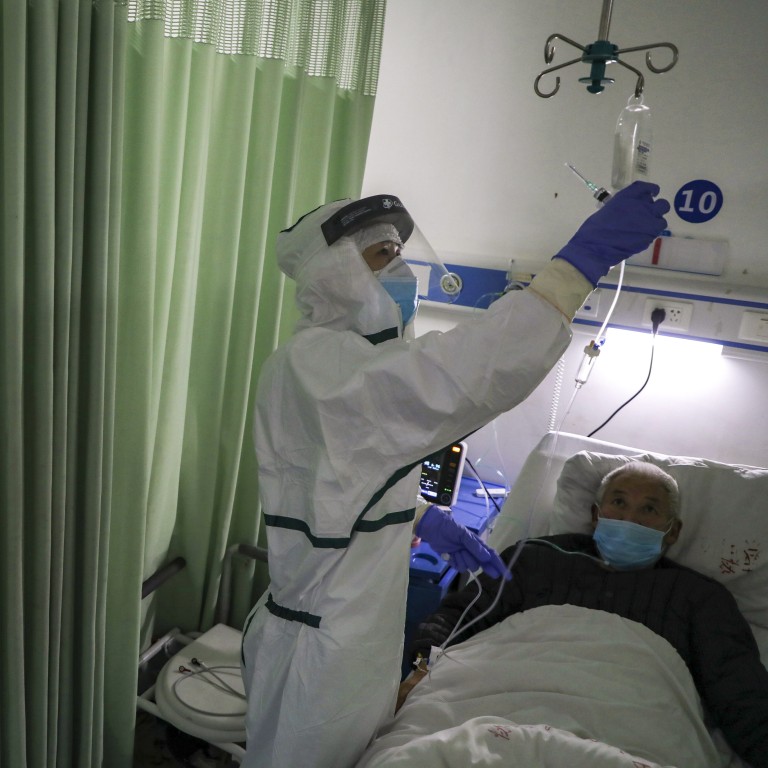
WHO data on excess Covid-19 deaths aims to reveal true human cost of brutal pandemic
- ‘A lot of people died outside of the health systems. We don’t know what they died of,’ WHO data chief says in underlining need to find true toll
- WHO earlier put total global Covid-related deaths in 2020 at 3 million, compared with the officially reported 1.8 million
About 5.4 million people were reported to have died of Covid-19 between January 2020 and December 2021, but the figure was “underestimated” and “problematic”, according to Steve MacFeely, WHO’s director of data and analytics.
One problem was the lack of consistency in how countries measured the impact of the pandemic and assessed Covid-19 mortality, MacFeely told a webinar hosted by the UN Economic and Social Commission for Asia and the Pacific (UNESCAP).
Access to testing and diagnostic capacity also varied widely across countries, while overwhelmed healthcare systems could have led to undercounting.
“A lot of people died outside of the health systems. We don’t know what they died of,” MacFeely said. “This is one of the reasons why the numbers that we publish on direct Covid-19 mortality need to be supplemented with a stronger measure.”
More importantly, the reported death toll does not tell the full story on the global health burden posed by Covid-19 and its brutal impact. A true death toll would help countries use the lessons learned from this pandemic to prepare better for the for the next crisis, he said.
“One of the challenges with preparedness is you need some measures of success or failure. How do you assess whether you’re prepared or not? So what indicators are you going to assess yourself against?” MacFeely explained.
“What we see is, direct mortality is one measure. But in fact, it’s a limited measure … excess mortality statistics [are] the best measure of assessing whether you are prepared or not.”
WHO and the UN Department of Economic and Social Affairs have been working out excess mortality associated with Covid-19 as a measure to reflect the human cost of the pandemic worldwide. A global technical advisory group of more than 60 top demographers, epidemiologists, data and social scientists, and statisticians was formed in February last year to develop a complex model to project estimates.
Excess mortality is the difference between the total number of deaths recorded for a specific place and time period, and their expected number in the absence of the crisis.
For the current pandemic, this difference is assumed to include deaths attributable directly to Covid-19 as well as those indirectly associated with it through impacts on health systems and society.
“This measure takes into account both the direct and indirect impact of the pandemic … people who died of Covid or people who died of other reasons. In a lot of cases, that other reason was indirectly attributable to Covid, either because they couldn’t get to the hospital or they were afraid to go to the hospital and catch Covid. All of this adds to the broader impact,” MacFeely said.
In May last year, the WHO estimated 3 million people had died directly or indirectly of Covid-19 in 2020, instead of the officially reported 1.8 million, but did not publish a detailed breakdown.
How coronavirus became a pandemic
Other institutions have endeavoured to project the excess mortality with their own models. London’s The Economist magazine used a machine-learning model to to produce an estimate of over 17 million excess deaths from January 1, 2020 to December 2021, while the Institute for Health Metrics and Evaluation (IHME) at the University of Washington put the number at 18·2 million for the same period.
In some countries, such as New Zealand, death registration data are readily available and can be used directly, but for a large part of the world such data registration systems are weak or absent, and yet other nations are unwilling to share this data, so the WHO has to build models for the estimated toll.
In response, India’s health ministry said it did not object to the mortality figure as such, but rather the mathematical modelling applied, which related to “tier 1” countries. Tier 2 bands together countries such as India where the WHO does not have access to complete data, and must use alternative data sources or apply scaling factors to generate the national aggregate.
Jon Wakefield, professor of statistics and biostatistics with the University of Washington and also a WHO technical advisory group member, subsequently issued a statement saying “the [Indian] ministry’s statement on the excess mortality method the team used for India is inaccurate”.
Shanghai’s top health official hospitalised as lockdown takes its toll
In an extract of a paper posted online explaining the WHO’s global excess mortality estimate project, Wakefield and his colleagues explained how the team constructed different statistical models to estimate country-specific death tolls through expansion of a proportionality assumption method. Other than India, the model was also applied to Argentina, China, Indonesia and Turkey, they said.
For China, only subnational monthly and national annual data were obtained, the note from Wakefield et al said. The WHO estimate categorised China among “tier 2” countries, or those with less than 12 months of subnational data. MacFeely said the classification did not refer to the quality of the data but its availability.
According to MacFeely, the WHO will recognise India’s discontent.
“It’s fair to say the Indian government is not happy with our estimates, and that will be reflected in the publication. There will be an acknowledgement or a note statement that the Indian government is not content,” he said, adding India was the only country to have raised objections.
The University of Washington estimate put China’s excess mortality at 17,900, including 10,600 from Hubei province, where the coronavirus was first detected two years ago.




